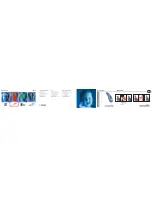
This is a publication by Conrad Electronic SE, Klaus-Conrad-Str. 1, D-92240 Hirschau (www.conrad.com).
All rights including translation reserved. Reproduction by any method, e.g. photocopy, microfilming, or the capture in
electronic data processing systems require the prior written approval by the editor. Reprinting, also in part, is prohibited.
This publication represent the technical status at the time of printing.
© Copyright 2016 by Conrad Electronic SE.
840449_V6_0916_01_VTP_m_en
• Engage the power supply for the camera. For this purpose, connect the black cable (“GND”, figure 2, pos.
5, approx. 3.5 meters long) with the vehicle mass (negative, e.g. for the reversing light) and the red cable
(“DC 12V”, figure 2, pos. 4, approx. 10 meters long) with a 12V-positive cable which only carries voltage
when the ignition is turned on (e.g. under the dashboard). Connect the pink cable (“for camera”, figure 2,
pos 3, approx. 3.5 meters long) to a cable which connects the reverse lighting with the positive pole of the
battery when you go into reverse gear (e.g. the backup light).
• Connect the audio output (figure 2, pos 6, white connector) and video output (figure 2, pos 7, yellow con-
nector) to the monitor that you have been provided for the number plate camera. A suitable extension cable
is not included in the delivery and must be purchased for the required length separately.
• Carry out a test run according to the following point “Operation of the number plate camera.” Check the
function of the number plate camera before the final mounting of the camera. Decide whether you want to
mirror the image signal left/right. You can mirror the video signal by turning the magnetic drain plug (figure
2, pos 9) from “NOR” (fig. 2, pos 10) to “MIR” (fig. 2, pos. 11).
• If the test is carried out to your satisfaction, mount the cable seal and the camera to your vehicle with
suitable screws. Adjust the camera towards the direction that shall be monitored by the camera. Ensure a
secure mounting of the camera on your vehicle and a correct seating of the cable seal. Lay the connection
cable to your monitor and the 12-V connections as desired. Make sure that the cables are not pinched or
damaged and pay attention to the traffic and road safety.
• Unfasten the mounting screws slightly on both sides (fig. 1, pos. 8) in order to adjust the camera’s angle of
inclination. While adjusting the camera pay attention that the camera shutter is able to move freely. When
the adjustment is completed, re-tighten the screws on both sides. For this, please also refer to Figure 3.
3
4
5
6
7
8
10
11
9
1
2
Figure 2
90°
92°
80°
P
Figure 3
Functionality of the shutter camera
With the ignition switched on, and at low temperatures, the camera will be pre-heated automatically by
means of the integrated heater in order to prevent a fogging of the glass pane that is mounted before the
camera lens.
If the vehicle is placed in reverse while it is running, the backup lights come on. Since the camera has been
connected to a cable of the backup lights, the camera shutter now opens (fig. 1, pos 2). Only the area to the
back that is recorded by the camera appears on your monitor. You will hear the noises behind your vehicle in
the monitor’s loudspeaker via the microphone integrated in the camera (fig. 1, pos. 7).
In darkness, the backup area is illuminated by the infrared LEDs (fig. 1, pos. 3) integrated in the camera,
which makes the recognition of obstacles easier. The infrared LEDs are switched on automatically via the
built-in light sensor (fig. 1, pos. 6). If you change back to forward gear, the camera shutter closes again
(fig. 2, pos. 8) and thus protects the camera from outside influences.
The camera is only for use while backing up and is not suitable for long-term use!
At night, the infrared LEDs will be turned on automatically when reversing. However, in the event
of backlighting, the integrated light sensor may switch off the infrared LEDs.
Cleaning
The camera is designed according to the German DIN protection class IP69. The shutter camera is thus
protected against the infiltration of dirt and water. To avoid damage to the camera from hose water getting
into it, cleaning the camera with cleaning devices that use pressurised water (steam jet) is not permitted. The
warranty will be void in cases of non-compliance!
Check the camera lens occasionally and clean it with a damp, lint-free rag.
Disposal
Electronic devices are recyclable waste materials and must not be disposed of in the household
waste!
Dispose of the unserviceable product according to the relevant statutory regulations!
Technical Data
Sensor .................................................. 1/3” (8,47 mm) CCP with 976 x 582 pixels
Video system ........................................ PAL
Video signal .......................................... 1V/pp / 75 Ohm
Operating voltage ................................. 12V=
Operating current .................................. approx. 230 mA, with heater 430 mA
Operating temperature ......................... -20 °C to +70 °C and max. 95% rel. air humidity
Lighting ................................................. 4 Infrared LEDs
Viewing angle ....................................... approx. 120°
Detection range, during the day ........... max. 10 m
Detection range at night ....................... max. 5 m
Dimensions (L x W x H) ........................ approx. 110 x 81 x 84 mm


























